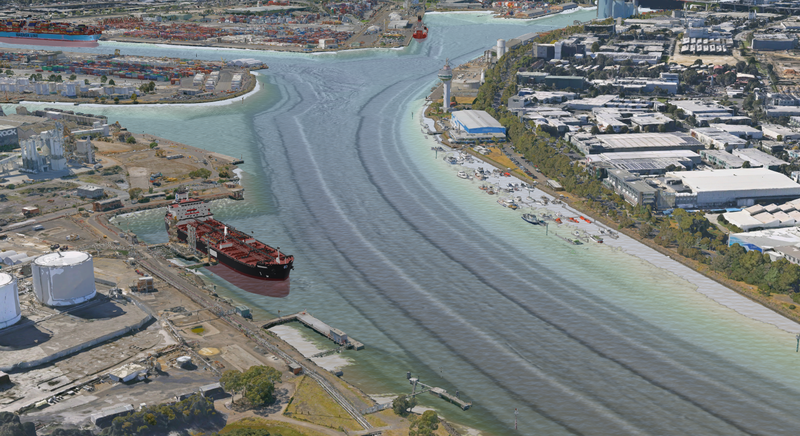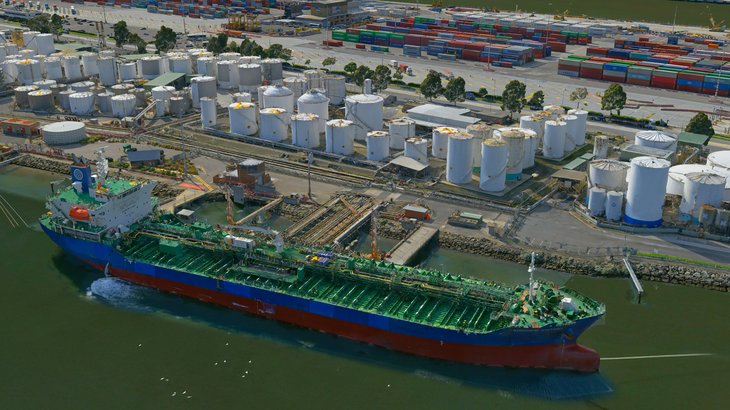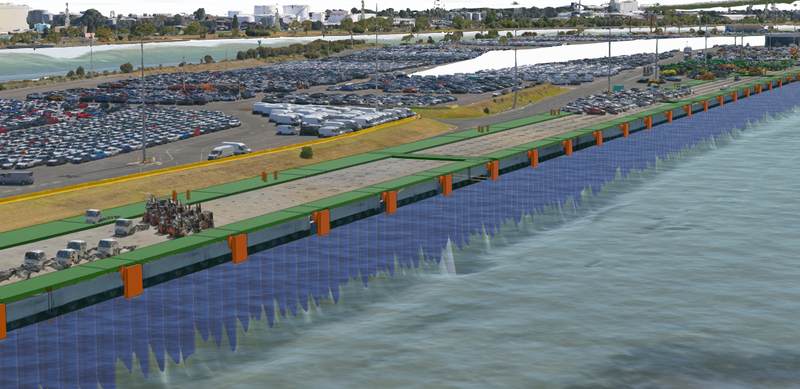
Port of Melbourne is Australasia’s largest maritime hub for containerised, automotive and general cargo. To effectively oversee its vast operations, the port partnered with Aerometrex to leverage cutting-edge aerial imagery and 3D mesh data solutions.
Port of Melbourne operates under a long-term lease to manage port assets and infrastructure. Their responsibilities include maintaining wharves, container stacking areas, and navigation channels. While they don't handle stevedoring operations directly, they provide and maintain the essential infrastructure for these activities.
Miles da Costa, who manages the GIS platform for the Port of Melbourne, explains their focus: "We visualise the asset base, helping our asset engineers understand where their assets are, their condition, and assisting in maintenance planning."

Image. A mash-up of bathymetry, 3D mesh, and models of vessels that form the foundation of Port of Melbourne’s digital twin.
The port faced several key challenges:
To address these challenges, they turned to Aerometrex for:
Port of Melbourne utilises Aerometrex's data in several innovative ways:

Having the 3D component has made the process (CCTV placement) a lot easier. We can give relevant team members the tools in GIS to say, 'What if we put a camera here? What can we see?' It saves a lot of fieldwork to identify potential locations. When we did the initial pass, we identified locations that didn't meet their criteria. They wouldn't have known that without the 3D view. It saves us from making some fairly costly mistakes."
- Miles da Costa, Senior GIS Systems Developer | Survey, Port of Melbourne
The implementation of Aerometrex's solutions has yielded significant benefits:
The Port of Melbourne sees potential for expanded use of Aerometrex's solutions:
The Port of Melbourne chose Aerometrex after careful consideration of available options. Key factors in their decision included:

Image. Integrating a 3D mesh with BIM provides Asset Engineers with a true-to-life perspective of Port of Melbourne’s infrastructure.